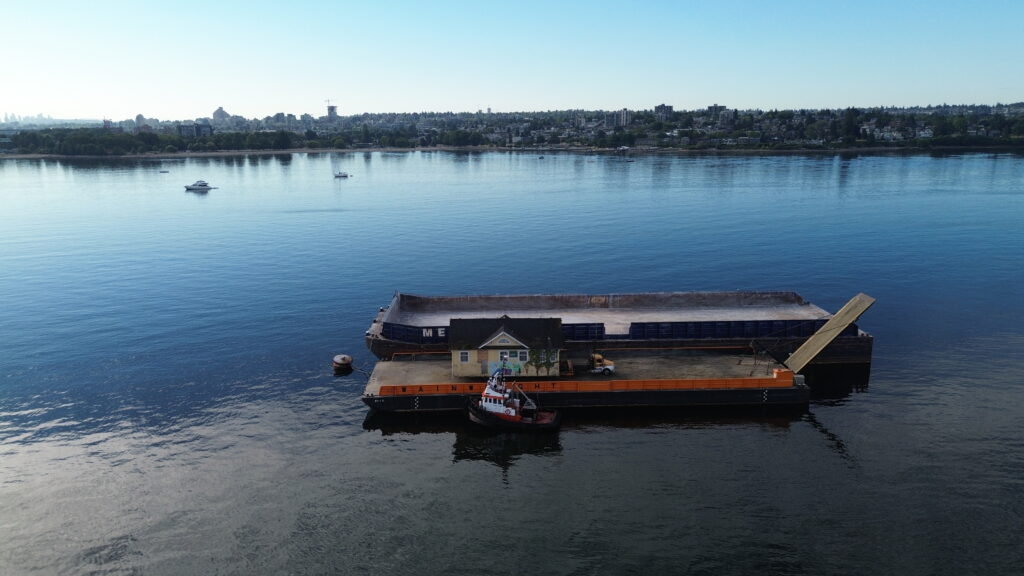Walk around any major city in North America and you’ll see construction taking place. Our cities are densifying at a rapid rate, and the need for housing is greater than ever with growing populations and an acute affordable-housing crisis. For example, in Canada, the Canadian Mortgage and Housing Association estimates the country needs 3.5 million units of housing to address the housing affordability crisis. In the U.S., the National Low Income Housing Coalition reports there is a shortage of 7.3 million rental homes for
renters with incomes at or below the federal poverty guideline or 30 percent of their area median income, whichever is greater.
Despite the affordable-housing crisis, thousands of good homes are being destroyed every year. Vancouver, British Columbia, Canada-based Light House, a group of experts helping government and industry to advance regenerative built environments that nurture ecological and human health, is recommending that good housing stock in danger of demolition be moved to areas in need of more affordable housing.

SUCCESSFUL RELOCATIONS
Communities across the continent are feeling the heat to quickly build more affordable housing. In response, thousands of single-family homes are being torn down each year and trucked to landfill to make way for multifamily residential buildings and high-rises.
However, accelerating the building process is only part of the solution. Tearing down family homes should be the last resort amid the housing crisis, widespread labor and material shortages, and the climate crisis.
Fortunately for our growing communities and our environment, we can save many homes slated for demolition and provide safe, affordable housing to rural, coastal and indigenous communities through proven relocation strategies. House relocation preserves embodied carbon; reduces landfill waste and disposal costs; preserves skilled labor and time that went into a home’s construction; and creates affordable, high-quality housing at a fraction of the cost and time it takes to build new.
It is estimated that 20 to 40 percent of homes slated for demolition are good candidates for relocation or deconstruction to salvage valuable building materials that could be repurposed. Deciding whether a house is movable depends on its structure; presence of hazardous materials, like asbestos; and the ability to move the home through city corridors. Light House is encouraging cities to introduce bylaws that require homes slated for demolition to be assessed for relocation or deconstruction first. In addition, the organization’s Home Relocation and Repurposing Program covers costs through federal and provincial grants while the developer contributes the abatement/demolition budget for the project that wasn’t spent. Costs to a receiving community can be as low as $50 Canadian ($37 U.S.) per square foot.
In 2023, two bungalows slated for demolition in British Columbia were instead donated by TLA Developments and moved to the Songhees Nation. (Read more about the project.) Songhees Chief Ron Sam welcomed the upcycling of homes onto the Songhees reserve to address the community’s housing shortage. Moving the homes was a triple win for TLA Developments: It saved the firm the expense of abating and demolishing the homes while reducing the environmental impact of the project and contributing to the broader housing solution.
In July 2024, five homes in Coquitlam will be saved and relocated, saving tens of thousands of tons of valuable building materials from landfill, preserving up to 36,000 kilograms (79,200 pounds) of
embodied carbon and providing housing to new owners without tapping into new resources. The lots the homes will be moved from are planned to welcome 49 new townhomes, helping Coquitlam reach its housing goals. The developer, Foster Living, did the right thing by exploring the option to relocate instead of defaulting to demolition.
With thousands of high-quality homes slated for the wrecking ball in the coming years, there’s a massive opportunity to relocate and repurpose these homes—or at the very least deconstruct and reuse valuable building materials. However, without a supportive policy environment for house relocation and deconstruction, the rapid rate at which communities are building may have the unintended consequence of increasing the number of home demolitions.

Columbia, and retrofitted into a family home.
GUIDANCE FOR HOUSING RELOCATION
In November 2023, Light House launched report, “A Blueprint for Change”, that offers an approach to prioritize house relocation and deconstruction over demolition. The report, which can be read online,
outlines an attractive financing model that benefits developers, homeowners and the recipient.
The report also puts forward a set of policy recommendations that, if adopted by a province and local governments, could save thousands of beautiful, well-built homes; provide housing in exurban communities at a fraction of the time and cost it takes to build new; and help provincial and municipal governments address the affordable housing and waste crisis.
A “Blueprint for Change” recommends the following policy:
- Require that homes be assessed by a qualified third-party assessor to determine if they should be moved or deconstructed.
- Grant developers “early green removal permits” if they move or deconstruct a home that expedites issuance of the permitting required to remove the structure, giving the developer more time to complete removal of structures and prepare the site for development.
- Set demolition deposits that are refundable if a home is moved or deconstructed. (In Canada, evolving policy framework includes a refundable deposit that the developer has to give to the municipality. Once the home is relocated or deconstructed and a percentage of the material salvaged, the deposit is refunded to the developer.)
Once the house is moved, Light House undertakes the renovations and ensures the home is ready for occupancy.
It is time for developers, realtors and homeowners to automatically think about relocation and deconstruction when removing a home. Demolition needs to take a backseat if we are going to ease the North American affordable housing crisis.
Learn More
To learn more about house relocation, visit Light House’s website. Read “A Blueprint for Change”.
PHOTOS: Renewal Home Development




